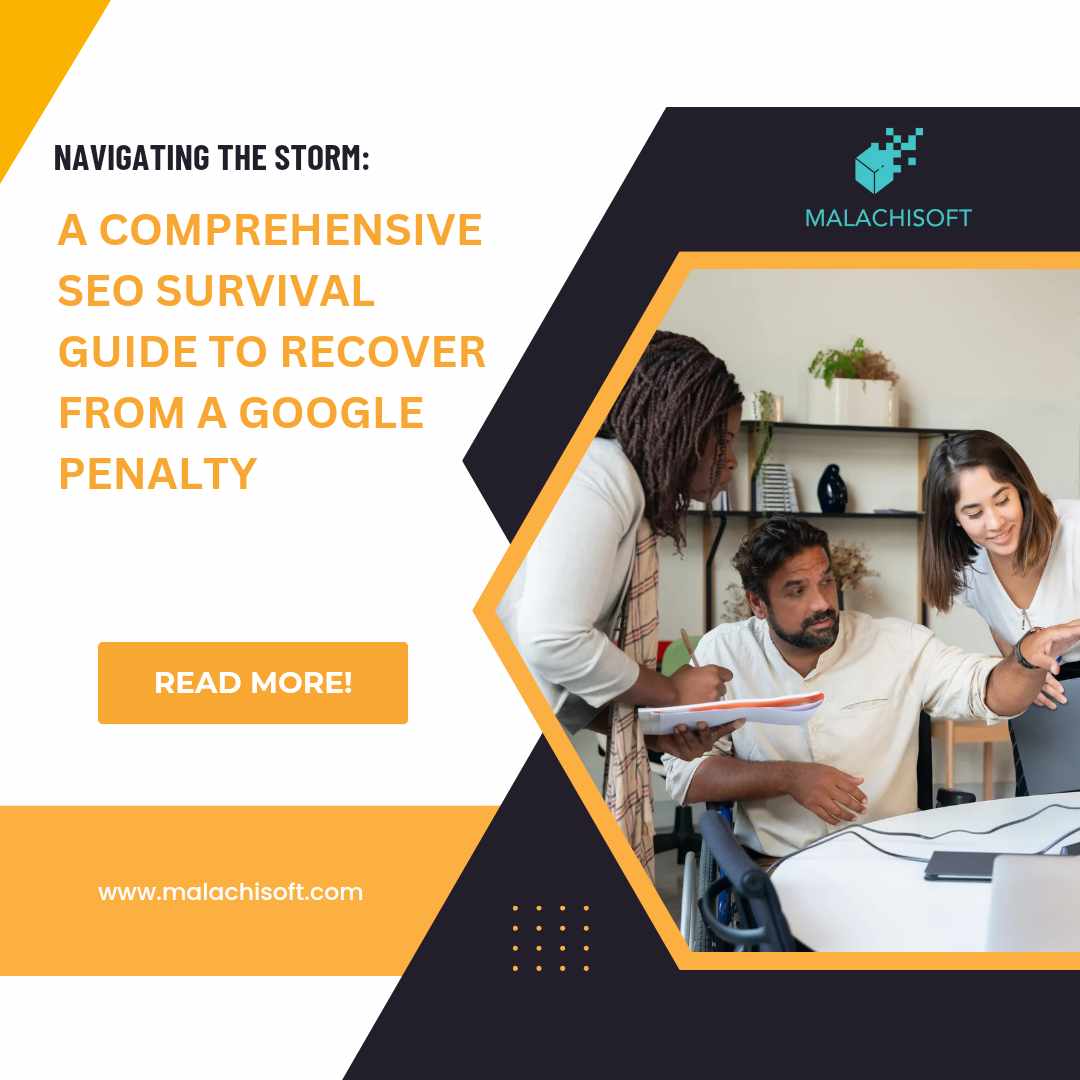In the ever-evolving landscape of Search Engine Optimization (SEO), maintaining a website’s ranking and visibility on Google is crucial for online success. However, amidst the pursuit of optimizing strategies, websites can sometimes fall victim to Google penalties. These penalties can significantly impact a site’s ranking, resulting in a drop in organic traffic and visibility. Fear not, as this comprehensive guide aims to shed light on how to recover from a Google penalty and reclaim your digital foothold.
Understanding Google Penalties
Google penalties occur when a website violates Google’s Webmaster Guidelines. These penalties can be algorithmic (applied automatically by Google’s algorithms) or manual (applied by Google’s human reviewers). Common reasons for penalties include thin or duplicate content, keyword stuffing, unnatural backlinks, user-generated spam, or other deceptive practices.
Step 1: Identify the Penalty
The first step in recovery is to identify the type of penalty incurred. Google Search Console is a valuable tool to check for manual actions. Understanding the specific issues affecting your site will guide your recovery strategy.
Step 2: Conduct a Comprehensive Site Audit
Perform a thorough audit of your website. Look for issues related to content quality, backlink profiles, site structure, and user experience. Tools like SEMrush, Moz, or Ahrefs can assist in analyzing backlinks, keyword density, and technical aspects of the site.
Step 3: Address Content Issues
Low-quality, thin, or duplicate content can trigger penalties. Remove or rewrite such content to provide value and relevance to users. Ensure content is unique, informative, and aligns with Google’s quality guidelines.
Step 4: Clean Up Backlink Profile
An unnatural or spammy backlink profile can harm your site’s credibility. Identify and disavow toxic or irrelevant backlinks using Google’s Disavow Tool. Reach out to webmasters to remove harmful links where possible.
Step 5: Fix On-Page SEO Issues
Optimize on-page elements like title tags, meta descriptions, headers, and alt tags. Ensure they are descriptive, relevant, and abide by SEO best practices.
Step 6: Improve User Experience and Site Performance
Enhance user experience by optimizing site speed, mobile responsiveness, and navigation. Prioritize a seamless, engaging experience for visitors.
Step 7: Submit a Reconsideration Request
If you received a manual penalty notification, after rectifying the issues, submit a reconsideration request through Google Search Console. Clearly outline the actions taken to rectify the problems and demonstrate compliance with Google’s guidelines.
Step 8: Monitor Progress and Stay Compliant
After implementing corrective measures, monitor your site’s performance regularly. Use analytics tools to track improvements in rankings, traffic, and user engagement. Continuously adhere to Google’s guidelines to prevent future penalties.
Conclusion
Recovering from a Google penalty demands diligence, patience, and a commitment to following best practices. By understanding the root cause, conducting a comprehensive audit, and taking corrective actions, your website can rebound from penalties and regain its standing in search engine results.
Remember, prevention is better than cure. Prioritize ethical SEO practices, regularly audit your site, and stay updated with Google’s algorithm changes to safeguard against penalties and maintain a healthy online presence. With perseverance and adherence to guidelines, your website can emerge stronger from the shadows of a Google penalty.
